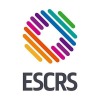For FAQs regarding Coronavirus please click here
How to safely and effectively get rid of your glasses or contact lenses
After a 40-year track record, laser eye surgery has established itself as one of the most successful elective treatments in the world

LASEK
LASEK is a type of laser eye surgery, often used as an alternative treatment for those who are not suitable for LASIK eye surgery. LASEK may not be suitable for you if you have a high prescription, very high astigmatism or even keratoconus.

LASIK
LASIK is the most common form of laser vision correction. It’s a safe and effective treatment for short-sightedness, long-sightedness and astigmatism. The effects of LASIK are permanent and the results are outstanding.

PRESBYOND ®
PRESBYOND ®, also known as “laser blended vision” is a laser vision correction treatment aimed at treating presbyopia and other refractive errors. PRESBYOND enables you the opportunity to read again without reading glasses and see clearly at a distance.

IMPLANTABLE CONTACT LENSES (ICL)
If you are one of the rare patients for whom laser eye surgery is not suitable, ICL lens implants offer a safe and extremely accurate option to free you from needing glasses. This option is particularly suitable for you if the shape/thickness of cornea makes you ineligible for laser eye surgery; or, if you are so short- or long-sighted that you are out of the treatable prescription range with laser eye surgery.
Laser eye surgery enables you to experience a richer life without spectacles or contacts
Take one of the first steps and find out if you are suitable
Who can laser eye surgery help?
Can you see yourself below?
YOU’RE 20 TO 39

You’re frustrated with blurred or double vision, haziness, glare, halos around bright lights, squinting, headaches, or eye strain. You find glasses a hassle or worry about contact lens dangers. If that describes you, I can help you see better without the need for glasses and contact lenses.
YOU’RE 40 TO 49

You have been frustrated with your glasses or contact lenses all your life. Or, you have just begun to become annoyed with your new need for reading glasses. If that’s you, I can help you see clearly without either.
YOU’RE 50 TO 55

You might have become accustomed to wearing reading glasses, varifocals or multifocal contact lenses. If a combination of these solutions is not ideal for you, I can help you see clearly again without them.
Live a richer life without glasses or contact lenses
Laser eye surgery is an ideal solution if you want a safe and effective treatment for short-sightedness, long-sightedness or astigmatism, and in some cases, presbyopia
GAIN CLEAR VISION AT BOTH DISTANCE AND NEAR
Imagine seeing the world without the need for glasses or contact lenses. You’ll have a freedom that some patients call “life-changing”.
FEEL MORE CONFIDENCE AND CONVENIENCE
Most patients say they wish they’d done it sooner. You may feel more confident and will certainly experience more convenience.
IMAGINE AN AVERAGE DAY WITHOUT GLASSES AND CONTACT LENSES
Awaken ready to face the world free from spectacles, ready to read the morning headlines on your mobile or tablet. Take a shower without the blurriness. Work and exercise without glasses or the dryness of contact lenses. Avoid the everyday chance of contact lens infection. Stop the constant need to put your glasses on and off. Don’t worry about where you’ve left your readers or needing to keep half a dozen pairs around the house. Fall asleep, without worrying about leaving your lenses in.
BE FREE OF THE BARRIER BETWEEN YOU AND OTHERS
Whether we like it or not, other people rate people based on appearances. Glasses can be an appendage that needlessly divides us or makes us appear older than we are. Ditch their limiting nature and live glasses-free.
DON’T ACCEPT LIMITATIONS
Glasses have been the tired solution for vision problems since the 1200s. Vision correction options today have evolved significantly, yet many people are confused by the jargon or unclear explanations about what you can do. Leave the past behind and allow me to guide you on the journey towards a life free from the hassle of spectacles and contacts.
Supplementary information about the laser eye surgery
In my expert hands, you certainly don’t need to know all of the information I’ve included in the toggles below. If you’d like to know how it all works, however, open them and learn more.
Take the first step
Find out if your eyes are suitable for vision correction
Book a free screening now or get us to give you a call back to answer questions
How it works
Enjoy a life free from glasses and contact lenses in 3 easy steps
STEP 1 – BOOK
STEP 2 – MEET
STEP 3 – ENJOY

TALK TO US
Book an appointment or give us a call on 020 3808 7758 and we’ll help guide you towards a free screening.

MEET YOUR SURGEON
I’ll see you before treatment to ensure you’re a good candidate and treat you at one of my Harley Street London facilities.

ENJOY A RICHER LIFE
I’ll supervise your aftercare as you begin to experience a life free of glasses and contact lenses.
Affiliations and memberships
I am proud to be associated with these organisations as a member or consultant

About the author
Mr Alex J. Shortt | Consultant Ophthalmic Surgeon
MB BCh MSc PhD FRCOphth PGDipCatRef
I’m Alex Shortt, a highly trained academic researcher and Consultant Ophthalmic Surgeon based in London’s famous Harley Street medical district. I trained and worked as a consultant for 14 years at London’s Moorfields Eye Hospital. I specialise in advanced technologies for correcting vision, including cataract surgery, implantable contact lenses and laser vision correction.










